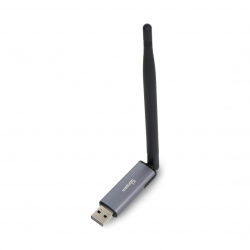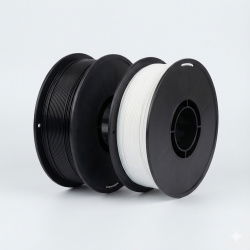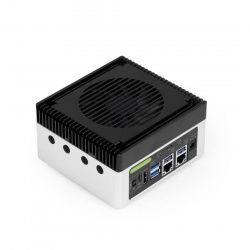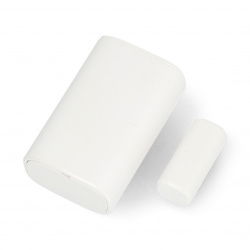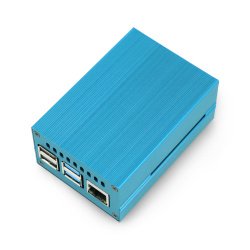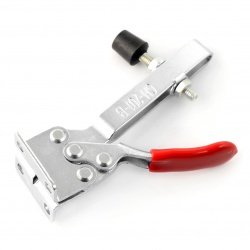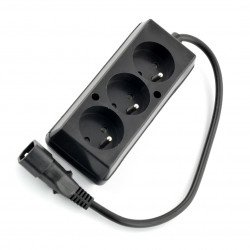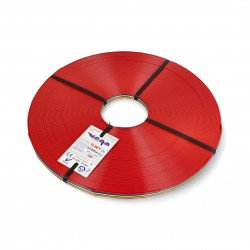So far, a huge breakthrough in the world of electronics has been the discovery of the electrical properties of semiconductor materials. These are mostly crystalline materials, the conductivity of which (electrical conductivity) can be changed in a wide range by introducing impurities, changing the temperature or changing the intensity of light falling on the semiconductor.
Photoresistors
Photoresistor 5-10kΩ GL5616 - 10pcs
Photoresistor GL5616 with the resistance of 5 to 10 kΩ, 100 mW of power and a size of 5x2 mm.Photoresistor 10-20kΩ GL5528 - 10pcs.
Photoresistor GL5528 with the resistance of 10 to 20 kΩ, 100 mW of power and a size of 5x2 mm. Price for 10 pieces.Photoresistor 20-30kΩ GL5537-1 - 10pcs
Photoresistor GL5537-1 with the resistance of 20 to 30 kΩ, 100 mW of power and a size of 5x2 mm.Photoresistor analog - Iduino SE012
Module with photoresistor for Arduino. It is controlled via an analog signal, powered with the voltage from 3.3 V to 5 V.Module with photoresistor + cable - analog - Iduino ST1107
Module with photoresistor for Arduino. It can be used to measure the intensity of light. It is controlled via an analog signal, is powered with the voltage of 5 V. The set...See also
- Oxygen sensors
- Optical sensors
- Resistance sensors
- Door sensors
- Piezoelectric sensors
- RPM sensors
- Twilight sensors
- Tilt sensors
- Accelerometers
- Inductive sensors
- Hall effect sensors
- Alarm sensors
- 9DoF IMU sensors
- Pressure sensors
- Air quality sensors
- Sound sensors
- Gesture sensors
- Limit switches
- Sensors of light and color
- Gas sensors
- Magnetic sensors
- Medical sensors
- Pressure sensors
- Sensors odbiciowe
- Distance sensors
- Inductive contactless sensors
- Weather sensors
- Liquid level sensors
- Current sensors
- Flow sensors
- Motion sensors
- Temperature sensors
- PT100 temperature probes
- Humidity sensors
- Fingerprint readers
- Encoders
- Phototransistors
- IR receivers
- Magnetometers
- Gyros
- Sensor sets
- Grove modules
- Gravity modules
Photoresistors
A bit of theory
One of the most elementary laws of physics known to every hobbyist or professional dealing with electricity is Ohm's law, which states that the current flowing in a circuit depends on the voltage and its resistance. The electronic element that will allow us to translate this law into practice is a resistor, and its basic parameter is resistance. At a time when semiconductors are at the forefront in electronics, thanks to their properties, a modified version of the resistor was created - the photoresistor. Photoresistors are semiconductor elements composed of semiconductor layers deposited on an insulating substrate. The photosensitive material is separated by two electrodes connected to the leads. The photosensitive surface is covered with a transparent window. Under the influence of changes in light intensity, photoresistors change their resistance, regardless of the direction of the applied voltage. Increasing the illumination intensity reduces the resistance, and therefore increases the current flowing at constant voltage. Photoresistors are characterized by a linear family of current-voltage characteristics, which is a very desirable feature in electrical circuits.
Photoresistor parameters
The basic parameters describing photoresistors include:
- spectral sensitivity, i.e. the dependence of electrical resistance on the intensity of illumination
- dark resistance "RD", i.e. the resistance of the photoresistor in conditions without lighting
- resistance "Rxx", where "xx" means illuminance in lux (lx). This is the resistance of the photoresistor at a specific value of illumination. Manufacturers include, for example, resistance R10, R50 in their catalog cards. It is also called visible resistance.
- coefficient "n" defined as the ratio of dark resistance to resistance at a given lighting value, e.g. n=RD/R50
- maximum operating voltage
- maximum power
- switching time
- working temperature.
Photoresistor - Application
Due to the very high sensitivity and simplicity of the measurement system, photoresistors are often used to measure temperature by measuring radiation intensity. They are therefore perfect for heat detection systems and fire protection systems. You can also use them for systems whose operation depends on the time of day, e.g. automatic closing and opening of blinds in your home, lighting control. In Botland, in addition to classic photoresistors with a power of 100 mW and bright resistances in the ranges: 5-10 kΩ, 10-20 kΩ, 20-30 kΩ, 50-100 kΩ, you will also find photoresistors in the form of modules prepared to work with Arduino. The module has an analog output that you can connect directly to your development kit and create your projects by discovering new applications of photoresistors.
Photoresistors - FAQ
A photoresistor is a passive electronic element whose resistance changes with changes in light intensity. These types of elements are used, for example, in building automation control systems depending on the time of day (including blinds or lighting).
You can check the operation of a photoresistor using a resistance meter .
The resistance in a photoresistor depends on the intensity of light falling on its surface. The stronger the light, the lower the electrical resistance value within the component.
When the surface of the photoresistor is illuminated, its resistance value, i.e. electrical resistance, changes - the resistance decreases as the light intensity increases.






























































































































































































































































































































